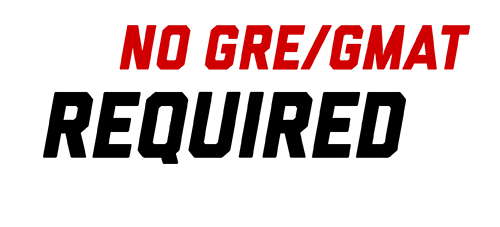Master of Science in Finance
Start Your Application

January 5
Next Start Date
30
Total Credit Hours
$710*
Cost Per Credit
3 Start Dates
Per Year
Mastery makes your career move faster. Our Master of Science in Finance program will help you earn the credentials you need for that next big promotion. Learn from Big Ten faculty in relevant online classes and plan for advancement with personalized career coaching. The value of our M.S. in Finance degree continues to rise as it was recently accepted into the CFA® Institute University Affiliation program. Entry into this program signifies our curriculum is closely tied to professional practice and prepares students to sit for the Chartered Financial Analyst examinations. Create your future through applicable courses, expert faculty and a flexible program.
Degree questions, answered.
Have questions about the program? Fill out this form and we’ll get in touch!
Fuel Your Career with Purposeful Curriculum
The Master of Science in Finance program consists of 30 credit hours, comprised of 3 business core courses and 7 finance core courses. You can complete the program in as quickly as 5 semesters while enrolled part-time.
Business Core Courses (9 Credit Hours)
- GRBA 809: Financial Accounting
- GRBA 811: Managerial Finance
- GRBA 812: Managerial Economics
Finance Core Courses (21 Credit Hours)
- FINA 801: Quantitative Methods for Finance
- FINA 802: Fixed Income Analysis
- FINA 803: Case Studies in Financial Management
- FINA 804: Portfolio Management II and Ethics (Capstone Course)
- FINA 850: Multinational Financial Analysis
- FINA 863: Portfolio Management
- FINA 867: Options, Futures, and Derivative Securities
Admission Requirements

The M.S. in Finance program accepts applications year-round for a fall semester start. Apply by July 1 for priority consideration. It is strongly recommended that applicants have successfully completed college-level statistics and college-level calculus.
A completed Graduate School application includes the following:
- Completed graduate school application and application fee
- Official transcripts from all institutions previously attended
- Verification of English proficiency is required if native language is not English
- 3.0 minimum Undergraduate gpa
- Current resume
- Three professional or academic references
- Personal Statement
Application Deadlines
Spring (January) Start
Admission Deadline: November 1
Summer (May) Start
Admission Deadline: April 1
Fall (August) Start
Admission Deadline: July 1
Tuition, Fees, and Financial Aid
Graduate tuition is assessed by the credit hour and the program. Professional programs may differ. See below for a full listing of the tuition rates that apply to the MBA@Nebraska program. Learn more about tuition and fees at the University of Nebraska-Lincoln, including all estimated cost components.
Students are encouraged to:
- File the Free Application for Federal Student Aid (FAFSA) form by the deadline to determine their eligibility for federal and state funds as well as scholarships.
- Check with your employer to see if they provide financial support for earning your graduate degree.
*The following tuition and fees were posted for the 2024-25 academic year. Rates are subject to change and will be posted on this page as soon as possible.
| Per Credit Hour | 3 Credit Hours |
Online Tuition and Fees | $710.00 | $2,130.00 |
Fees included in Online Tuition and Fees | ||
Technology Fee | $15.00 | $45.00 |
Library Fee | $8.25 | $24.75 |
Online Course Fee | $35.00 | $105.00 |
Registration Fee |
| $20.00 |
University Program and Facility Fees* | Waived | Waived |
Total Online Tuition and Fees | $710.00 | $2,130.00 |
Credits | Total Cost per Credit |
1 | $710 |
2 | $1,420 |
3 | $2,130 |
6 | $4,260 |
9 | $6,390 |
* The University Program and Facility Fees are only waived for online courses
In accordance with Federal Financial Aid requirements, Nebraska provides an estimated Cost of Attendance as a standardized estimate of the overall cost of the University of Nebraska-Lincoln for a specific period. It represents the best estimate of expenses a student might expect to incur.